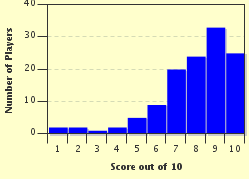Quiz Answer Key and Fun Facts
1. It's 399 BC, and klinski_1987 finds himself in a crowd of about 500 Athenians. A seventy-year old man stands before the masses, glibly suggesting free meals as punishment for the corruption of youth and failure to worship the gods of Athens. To which event, which resulted in the death of one of Greece's most influential philosophers, has our Mossback arrived?
2. It is July 1, 1967 and Unicornjorge finds herself at a huge party on the lawn of the Canadian Parliament Building in Ottawa. What is everybody celebrating?
3. On Sept 9. 1956, the day brianbreese was born, the entire world stopped and took notice. For on this day, women's hearts would never be the same. Who made their first appearance on the Ed Sullivan Show today?
4. As she stood knee-deep in snow near the bank of the Mohawk River that night of February 8, 1690, JudithCrafard trembled in anticipation of the imminent slaughter. She was too late to warn the people of which small New York settlement the French would soon burn their outpost to the ground?
5. It's December 25th, 1914, and seekernym finds herself in no-man's land on the Western Front during World War I. Instead of gunshots and mortar rounds exploding, there's an eerie silence hanging over the battlefield. What incredible event is about to occur?
6. The Wells Fargo stagecoach jackslade boarded in Sonora, CA on November 3, 1883 was headed for the Calaveras County town of Milton. Slade lurched forward as the coach came to an abrupt halt on the Funk Hill Pass. Which gentleman bandit had blocked the road, aimed his shotgun at the driver, and demanded the Wells Fargo gold?
7. It's November 22, 1718, and seekernym finds herself aboard a ship off the coast of North Carolina. Beside her, Captain Maynard spies his quarry - the scourge of the Caribbean & Atlantic. The battle begins. Victory! Whose head hangs from the bowsprit on our triumphant return?
8. While ancient Greece was a blast, Klinski_1987 soon finds himself flung forward to the Prohibition era in the United States. Attempting to steady himself on the shoulder of a nearby stranger, it quickly becomes apparent that he's untouchable. It seems his nemesis isn't so lucky though, as a judge is reading charges for tax evasion against him. Who is this lawman famous for cleaning up both Chicago and Cleveland during the 1920's and 1930's?
9. It's the Women's Right Convention in Akron, Ohio, 1851, and colinu-nyc is feeling very in touch with his feminine side. "Ain't I a Woman?!" he cries in solidarity with the impassioned speech-giver. What freed slave turned abolitionist's speech has so moved colinu-nyc?
10. It was a crisp, clear, late autumn day in 1968 on San Francisco's Marina Green. I held the Beaulieu Super 8 camera a little too firmly as this was my first attempt at motion picture photography. I scanned the faces of the couple of thousand who had assembled for a rally in support of 27 soldiers who were being tried on mutiny charges. Those soldiers had staged a peaceful "sit-down" demonstration the morning of October 14, 1968 at which San Francisco stockade?
Source: Author
klinski_1987
This quiz was reviewed by FunTrivia editor
bloomsby before going online.
Any errors found in FunTrivia content are routinely corrected through our feedback system.

